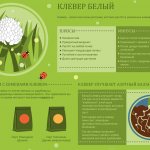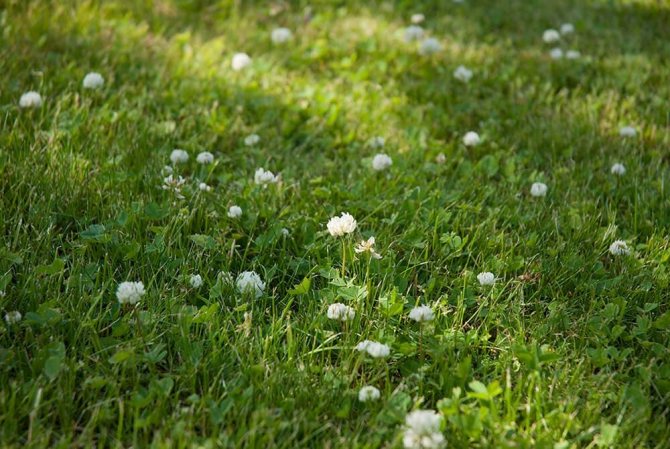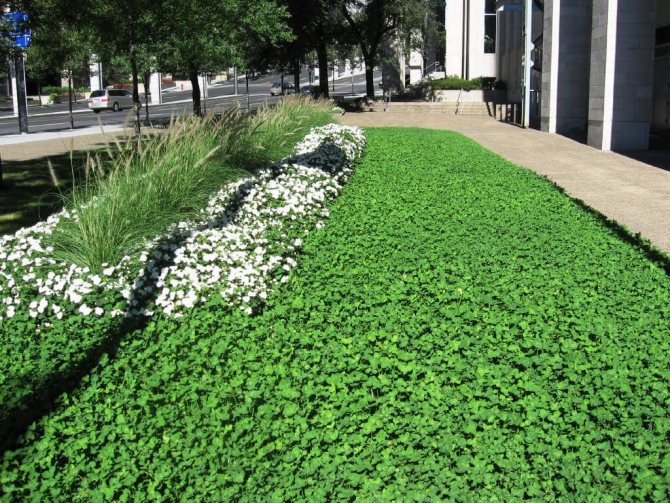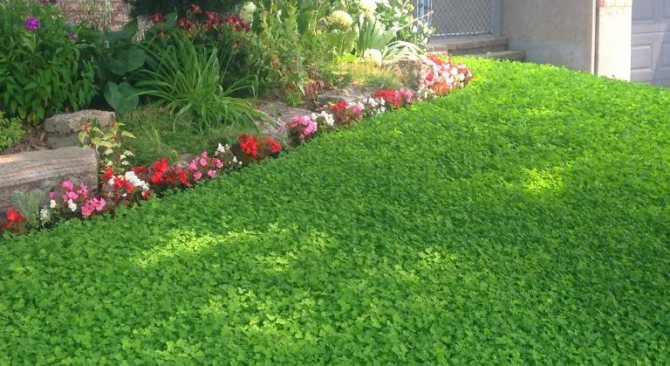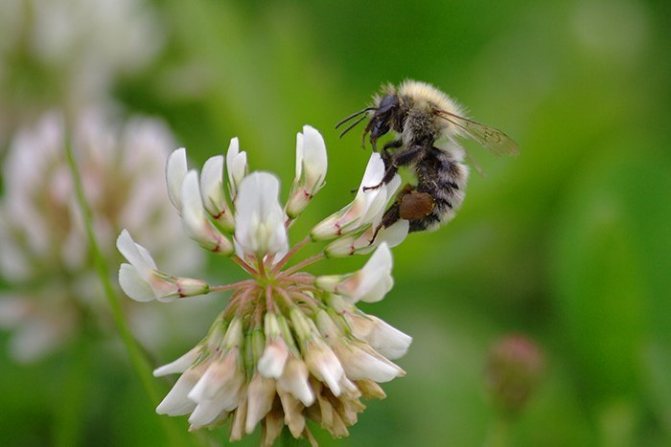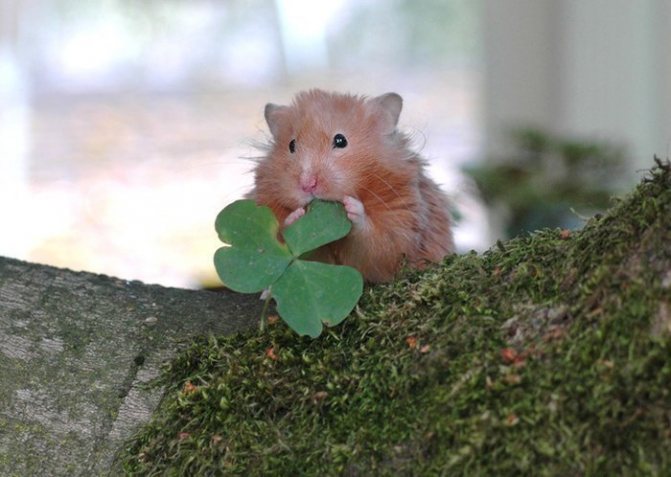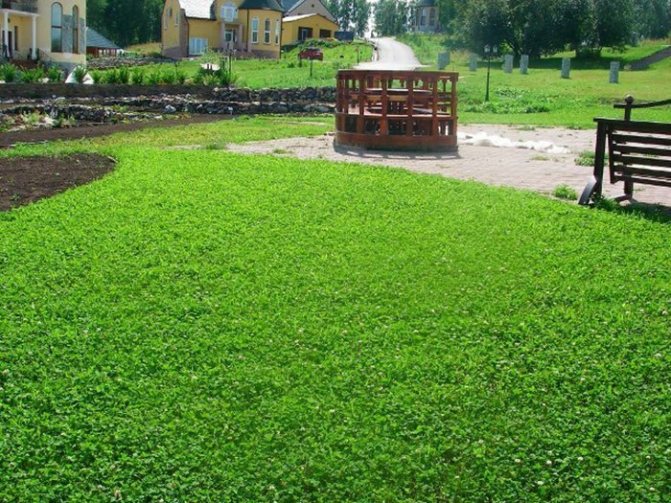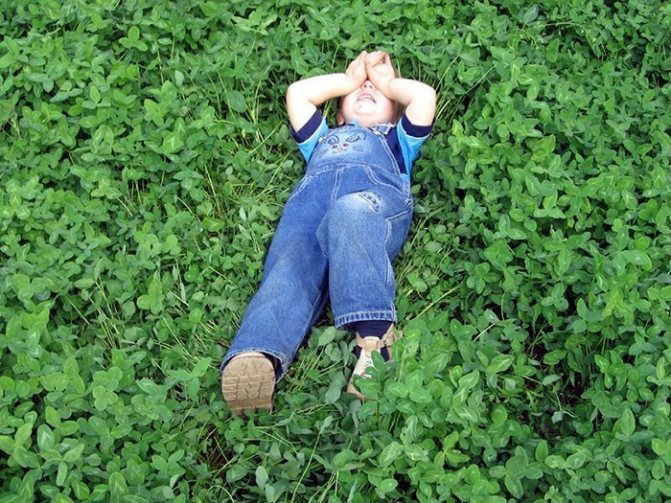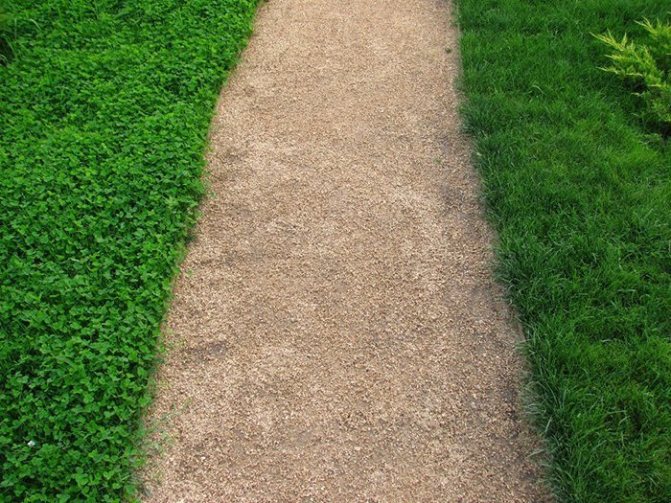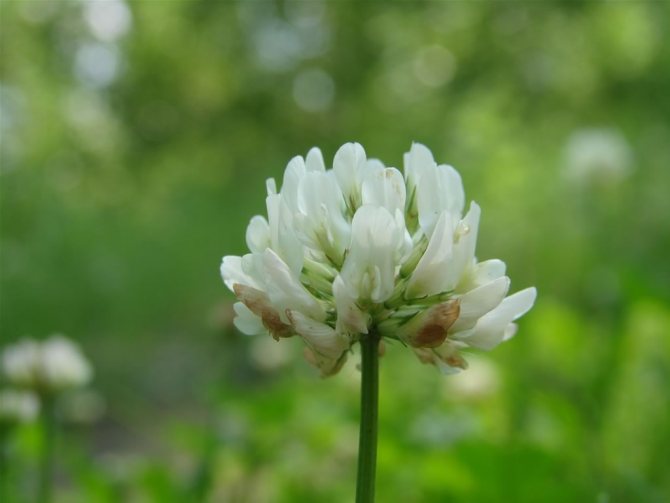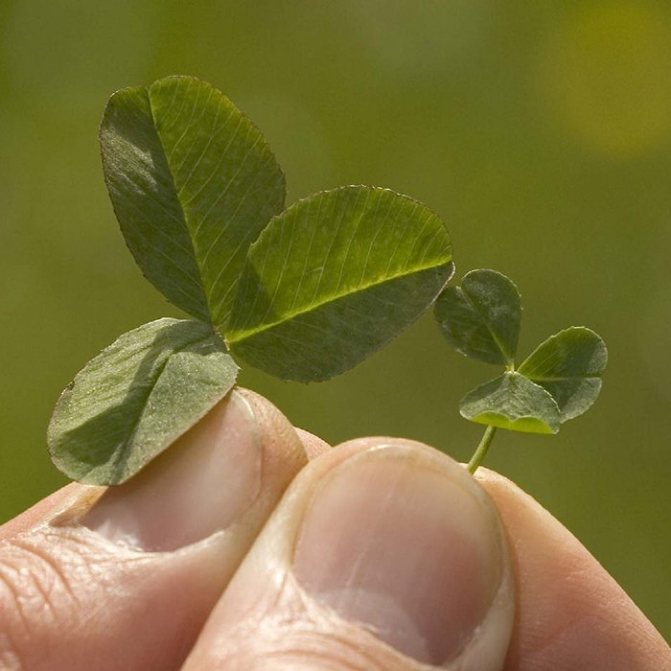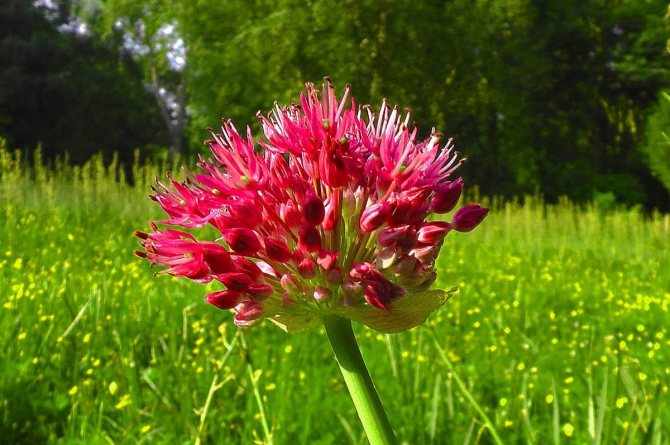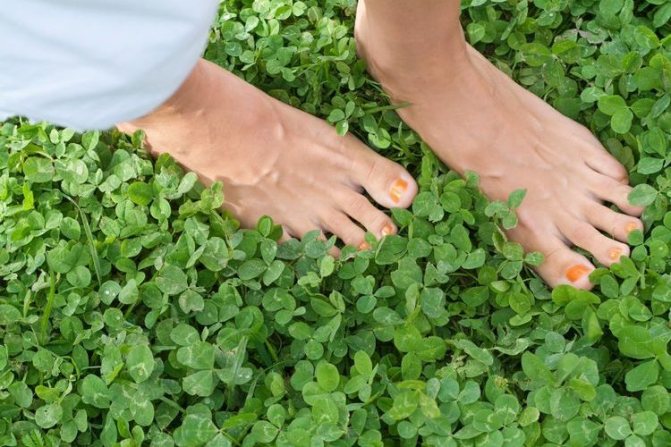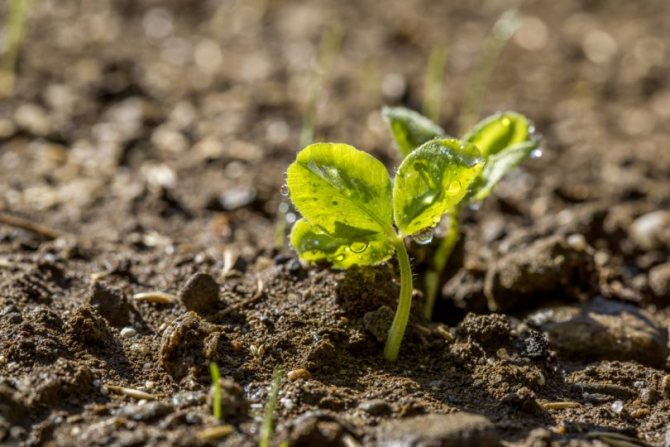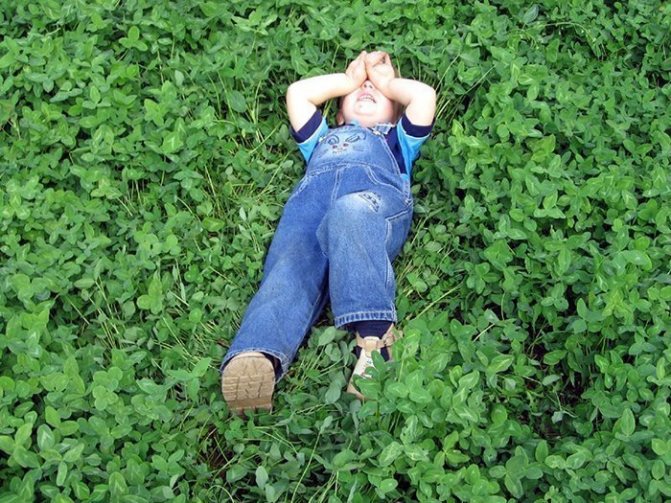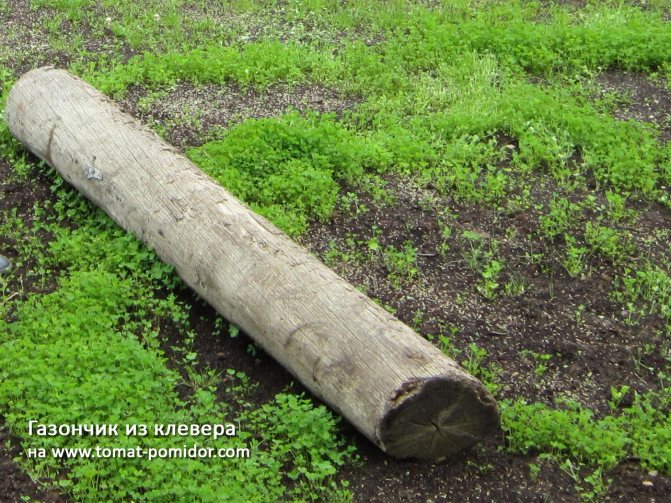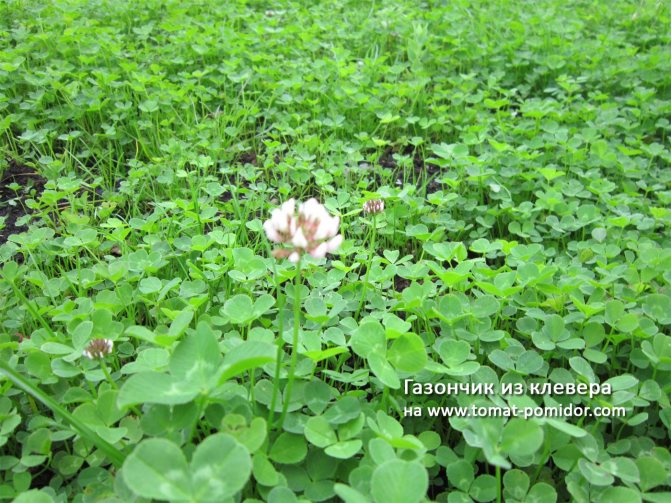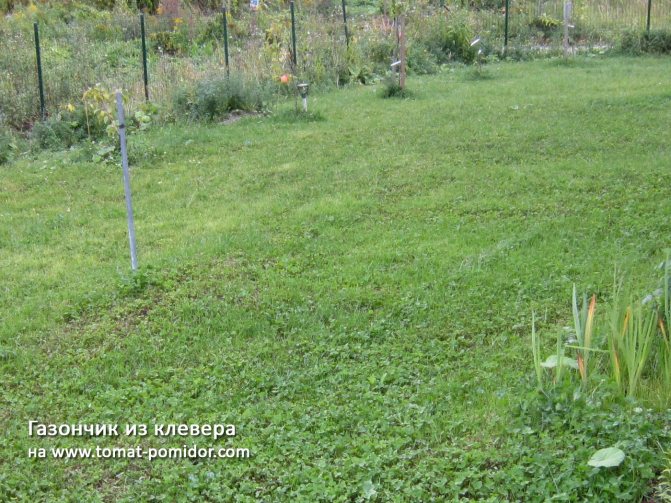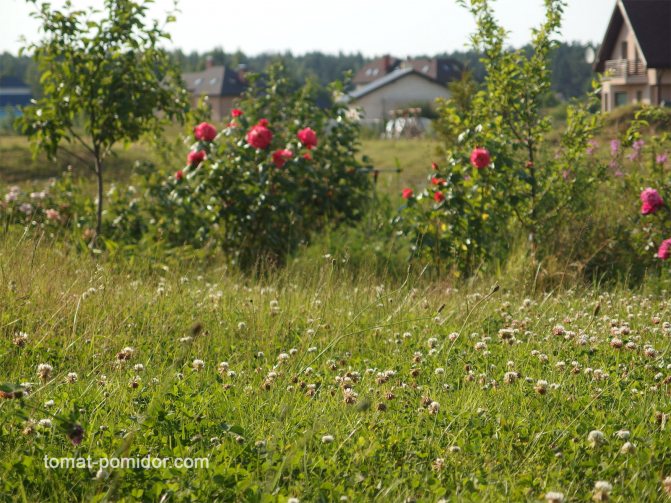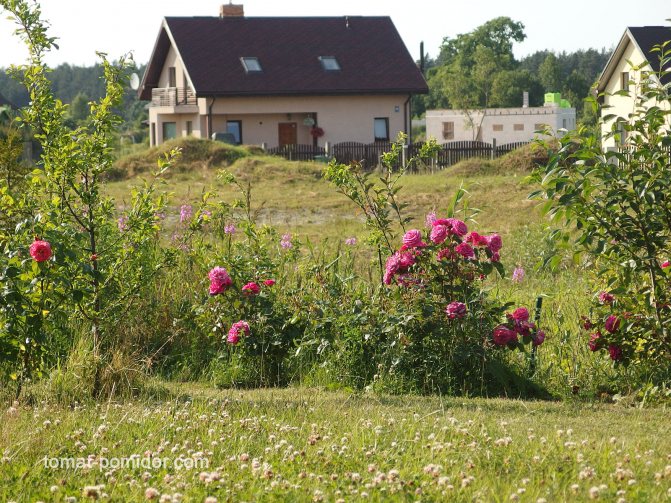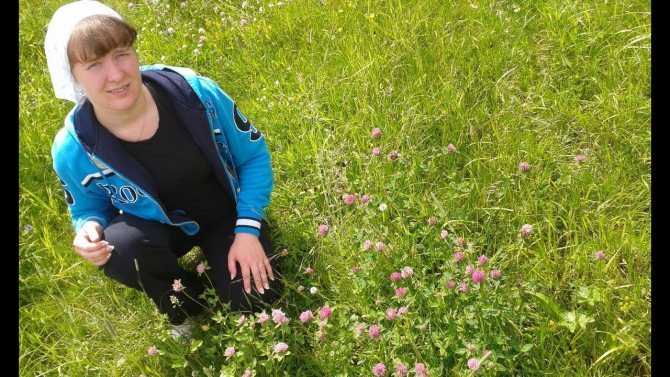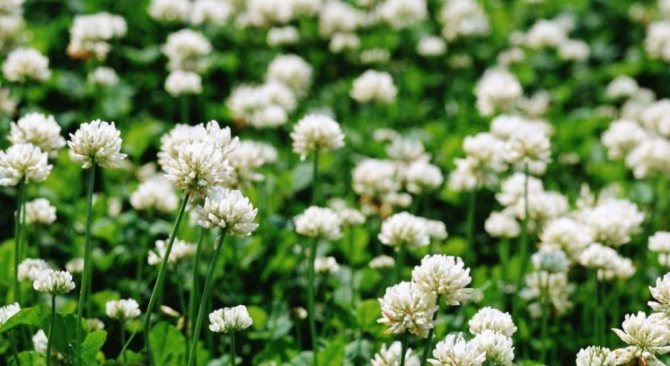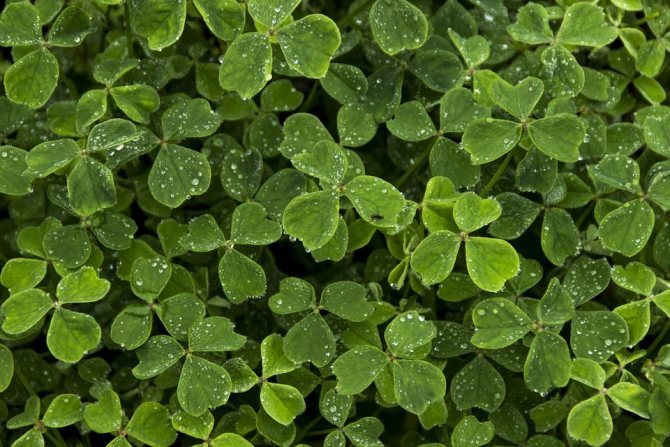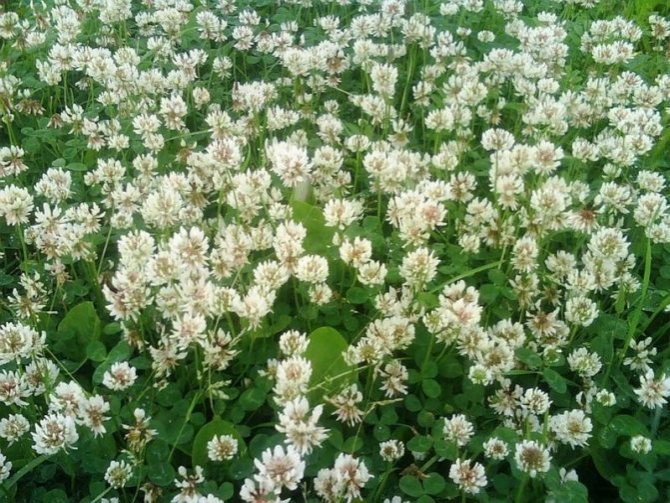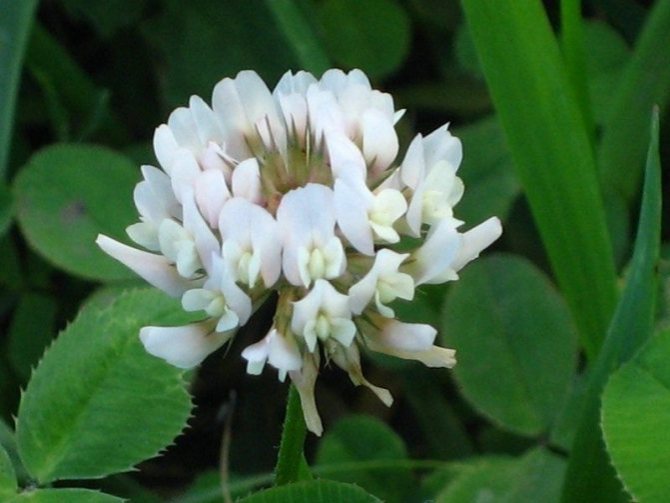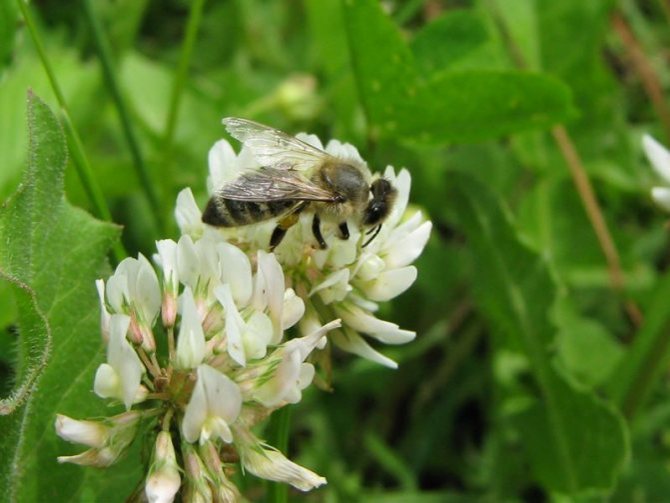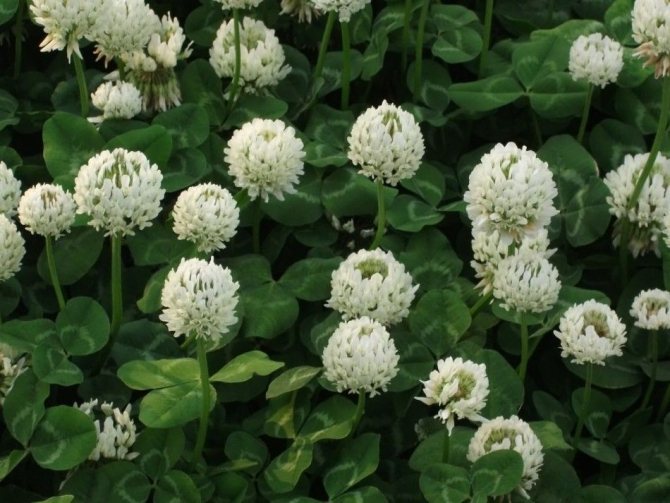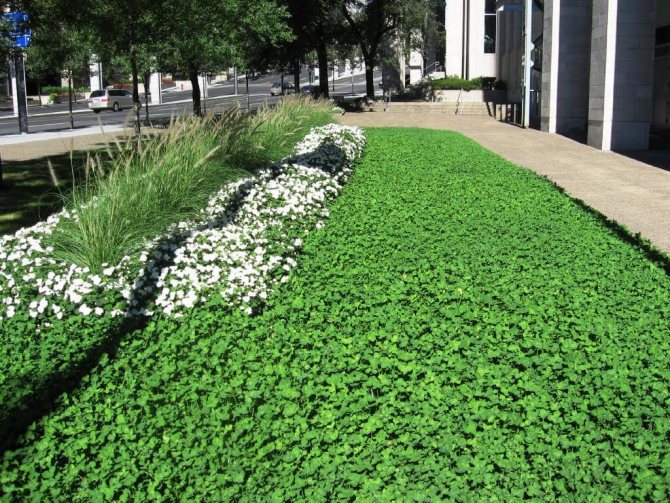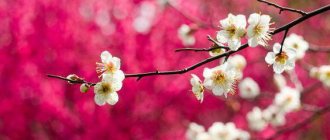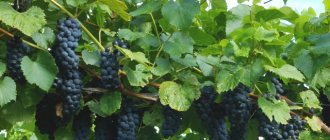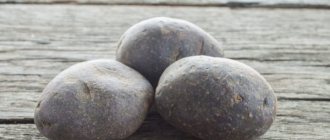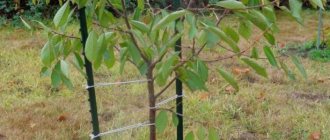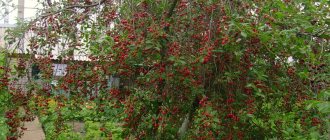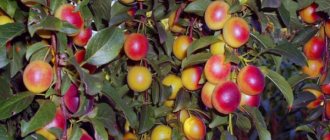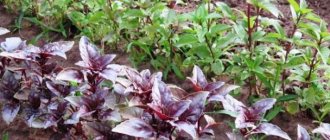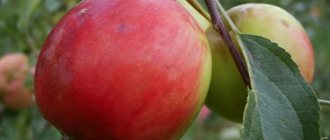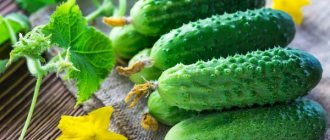We will tell in this article about the white clover creeping.
The owners of private houses and country cottages always want their site to be more beautiful than that of a neighbor.
When arranging the territory, the entrance is trees, flowers, gazebos and, of course, lawns. Without them, it is difficult to imagine a comfortable property.
"Green carpet" performs several functions at once, in addition to the aesthetic appearance. You can play on it for children, have picnics, lie on your own.
If you have a piece of empty land at your disposal, then there are several options for its use:
- asphalt / concrete the ground
- plant flowers / trees
- or sow the lawn.
If the classic green lawn seems too boring for you, then you can replace it with a lawn made of creeping white clover.
A shamrock with emerald leaves and white ball-shaped flowers from the legume family will be an original decoration of your site.
Botanical description of the plant
Clover belongs to the legume family. Most varieties are perennial, but there are also annual crops. The plant has trifoliate leaves and small bright inflorescences.
After the end of flowering, fruits appear on the shamrock bushes, which are characterized by a brown color and a heart-shaped shape. Most often, the lawn is created from clover with white flowers. However, some gardeners prefer to combine it with varieties that have red, pink and burgundy inflorescences.
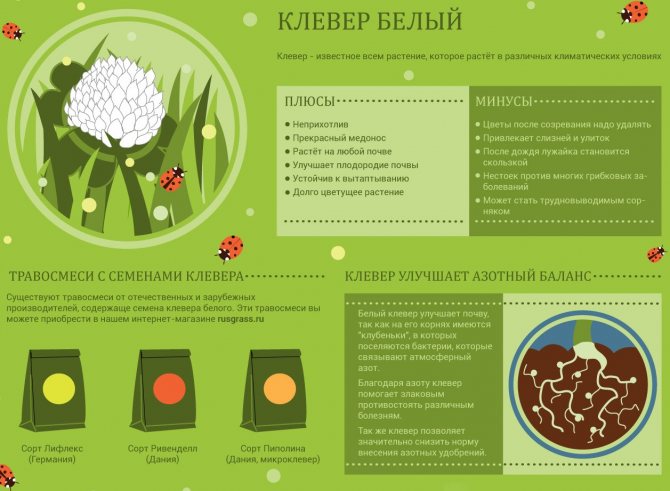
Harvesting a plant and use in traditional medicine
For medicinal purposes, you can use all parts of the plant - flower heads, stems and leaves themselves. It is during flowering that grass and flowers are collected, containing glycosides trifolin and isotrifoline, essential and fatty oils, vitamin C and other useful substances. Leaves and stems also contain significant amounts of vitamin C, carotene, contain xanthine, hypoxanthine and adenine.
After collection, the grass is sorted out, removing sluggish, darkened, rotten parts. You can dry it both outdoors and in a ventilated area, but always without access to sunlight, spreading the raw material freely and luxuriantly in order to ensure the penetration of air into it. During the drying period, the grass must be turned over and loosened at least once a day so that it does not become damp.
Finished dry raw materials are used within one year... A variety of decoctions, water and alcohol infusions for external and internal use are made from it.
Having a valuable chemical composition, white clover has long been known in folk medicine and is used for medicinal purposes as a fortifying, hemostatic, wound-healing, disinfecting agent. It is used for anemia, whooping cough, chronic cough, colds and other pulmonary diseases, for painful periods, other women's diseases, hemorrhoids, tuberculosis, gout, as an expectorant, weak diuretic. For boils and burns, inflammatory processes of the ears and eyes, prepare a decoction for external use. White clover is an excellent raw material for making C-vitamin infusions.
For the treatment of various diseases, the dosages indicated in the recipe should be observed - decoctions or infusions are drunk as tea or in tablespoons.
Fresh clover is also usedmaking gruel from leaves and stems. Compresses from such gruel help to cure abscesses, tumors, bleeding wounds, reduce hemorrhoids and inflammation. Fresh plant sap is also an excellent remedy for wounds.
Despite the many very useful properties, the plant also has contraindications, which must not be forgotten.
Advantages and Disadvantages of Clover Lawn
- The benefits of a clover lawn include:
- Density that prevents weeds from growing.
- Resistance to mechanical deformation (trampling).
- Safety for children and animals, as it is environmentally friendly grass.
- Undemanding to daily care.
- Quick recovery after mowing.
- Unpretentiousness to the climate.
- Decorative appearance.
Did you know? On the coats of arms of some countries and cities, a three-leaf clover is painted (Montreal, Northern Ireland).
- If you decide to plant clover grass as a lawn, then you should be prepared for the following disadvantages of coverage:
- Slippery surface, especially after precipitation.
- A favorable environment for the development of slugs, since a large amount of moisture accumulates under the leaves.
- Fills flower beds and areas with vegetables, so planting is best done away from such places.
- It blooms in the second or third year after planting.
- It attracts bees, which is dangerous for small children.
The value of white clover in medicine
White clover is one of the most common types. It is valuable for its high levels of nutrient content. It is used both freshly harvested and dried.
Among the large number of valuable properties, traditional healers distinguish:
- removal of inflammatory processes;
- lowering elevated body temperature;
- hemostatic property;
- anti-fungal property;
- cleansing the lymphatic system;
- toning the body as a whole;
- choleretic property;
- eliminates cough.
Traditional healers use this plant in the following cases:
- for the prevention and enhancement of the protective functions of the body;
- as a means for lowering cholesterol levels and as a prophylactic agent for atherosclerosis;
- in the gynecological field, it is effective for such problems as: irregular menstrual cycle, inflammatory processes in the appendages, PMS, negative symptoms of menopause;
- in the vascular system, clover helps to strengthen the walls of blood vessels, restores their elasticity and is an effective remedy for angina pectoris;
- for men, clover is useful in that it helps to restore potency;
- heals a variety of skin ailments - eczema, burns, psoriasis, purulent wounds, chronic skin diseases;
- for the gastrointestinal tract is used as an astringent;
- useful in thrombosis - it thins the blood;
- fresh juice of this plant is used to eliminate the effects of allergic reactions;
- widely used to treat ailments of the respiratory tract, mouth, lungs.
Which clover to choose for the lawn
If you do not know which clover to choose to create a beautiful lawn, then try to build on the style of the site. The white variety will be ideal if the coating is used for backgrounds. Planting red clover requires regular mowing, so it can be used if you have enough time to maintain your lawn.
Important! The cultivation of red clover is protected by law, since it is included in the Red Book. To plant this crop, you need to get permission.
A variety with white flowers is considered an undersized crop, so it is enough to cut it several times per season. In landscape design, a huge number of varieties of clover are used. There are more than 20 of them.They all differ in growth rates, colors and decorative values. Very often, covered clover vegetable is used for arranging an alpine-style garden, when creating rockeries.
The most common lawn types include:
- meadow... It belongs to wild crops and is characterized by pink or red flowers. Most often found in fields and meadows. Unpretentious in care, therefore, it is planted, mainly in summer cottages;
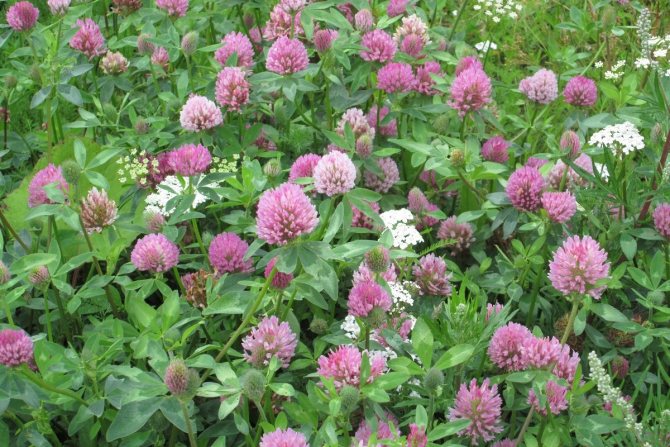

- white... A perennial and creeping plant with a stem length of about 40 cm. The leaves are triple, rounded. Flowering is characterized by white spherical inflorescences. The height of the lawn reaches 10 cm;
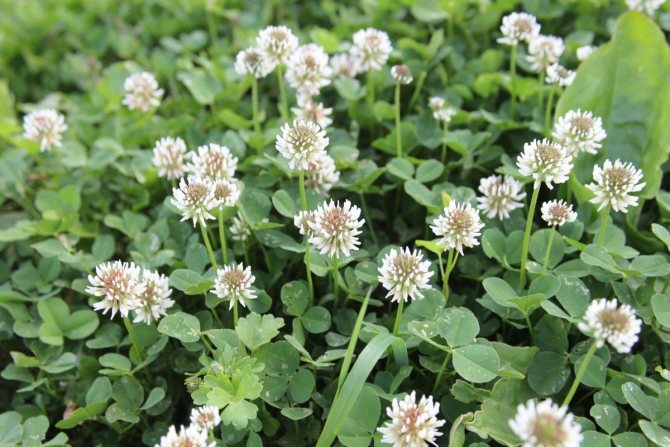

- pink... It blooms with cultures of spherical inflorescences of a pink hue. Resistant to high soil acidity. The flowering period is long, from June to October;
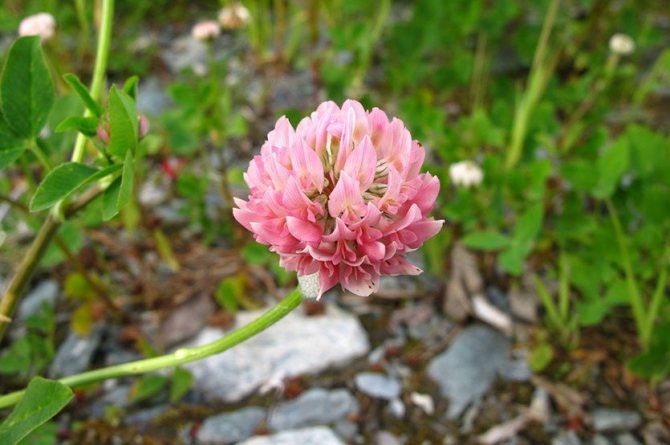

- red... It is characterized by a height of about 50 cm bushes. Inflorescences have a rich crimson-red hue. The leaves are trifoliate, large, bright green. Flowering lasts from July until frost.
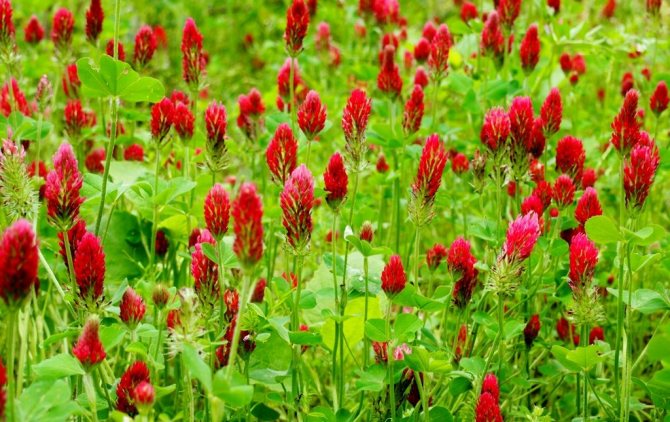

The most popular varieties of white clover include Volat and Sorceress, red - Vichai, Rai and Maro. Among the hybrid pink species, Daubyai and Krasavchik are distinguished.
Clover properties
According to ancient folk healers and herbalists, this plant is worthy of respect. They knew about the beneficial properties of clover and used it for good. Namely, this plant contributes to:
- strengthening immunity;
- normalization of the menstrual cycle;
- elimination of inflammation in the female reproductive system;
- reducing the manifestation of PMS symptoms;
- strengthening the walls of blood vessels;
- increasing potency;
- elimination of irritation;
- relieving stress;
- improving blood;
- cough removal.
Clover helps to strengthen the immune system
It would seem a modest plant, but in fact it was very much appreciated hundreds of years ago, especially when faced with:
- an increase in body temperature;
- intrauterine bleeding;
- a decrease in the tone of the body;
- violation of the outflow of bile;
- bronchitis and colds;
- hormonal problems.
It is the type of white clover that is especially beneficial for health, but only on condition that the use is advisable. There are contraindications, which include:
- period of pregnancy and lactation;
- period 2 weeks before or after surgery;
- recent stroke;
- oncological formations, especially in the area of the ovaries and uterus;
- protein deficiency.
In case of an overdose or simply with intolerance to clover, symptoms may appear in the form of:
- skin rash;
- pain sensations;
- nausea;
- bleeding in the uterus;
- headache.
Clover is used as animal feed
Clover is used as a pasture fodder plant, which is readily eaten by any livestock. It is also recognized as an excellent green manure that can improve the properties of the soil. In the northern part of the European side of the Russian Federation, this culture is considered an important honey plant, since throughout the summer it collects a large amount of nectar and drill pollen-pollen. Clover honey turns out to be white.
Landing rules
To prepare the soil for planting microclover, several steps will be required:
- Dig up the site.
- Remove weed roots and debris.
- Compact the soil layer using a roller.
Clover lawn does not tolerate high soil acidity. That is why it should be slightly reduced using dolomite flour (200 g per 1 m²) or lime (2 kg per 1 m²). If there is a risk of perennial weeds (dandelions and others), then pre-treat the area with Roundup herbicide (10 g per 10 l of water). The entire volume of the working fluid is distributed over 30 m². The seeding rate is 2 kg of seeds per one hundred square meters.
Important! In order for the sowing to be uniform, it is better to pre-mix the seeds with sand or raw sawdust. Such additions do not allow the seed to be poured in one place.
Water the soil thoroughly before planting. The sowing depth depends on the soil. If it is heavy, then deepen them by 5 mm. In the case of light soil - by 1 cm. Given that clover seeds are small enough, it is best to carry out the sowing procedure when there is no strong wind. Otherwise, the seed will scatter and may germinate in the vegetable garden where vegetable crops are planted.
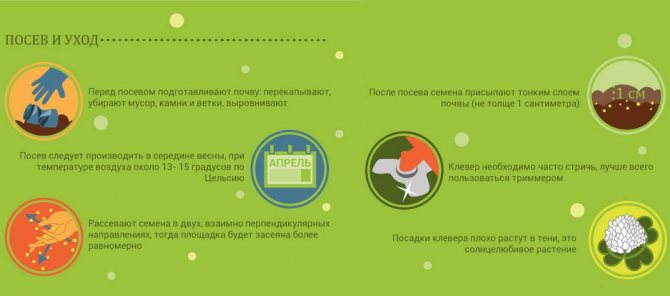

During sowing, it is recommended to put plastic bags or shoe covers on the shoes. This will prevent you from carrying seeds with your feet all over the area. If the ambient temperature is in the range from + 18 ° C to + 20 ° C, then seedlings appear in a week. Temperature regime from + 14 ° С to + 16 ° С ensures the growth of green mass after 8-10 days.
Planting a clover lawn should be done in the spring. It is best to do this in April, when the air temperature will be in the range from + 10 ° С to + 13 ° С. Also, some gardeners carry out sowing in the fall, at the beginning of September. This allows the planting mixture to ascend and harden before the arrival of cold weather.
Did you know? Clover is considered a good luck plant. Its leaves are often dried and worn as a medallion that brings success in all endeavors.
Traditional medicine recipes with white clover
Recipe for Creeping Clover Liver Cleanser
Pour a little more than a glass of water into a small container, put it on the fire and wait until the water heats up, but does not boil. Next, 15 grams of dry inflorescences are added to the liquid, boiled for no more than 4-6 minutes. The container is removed from the heat and wait until it cools down. Filter the finished broth and take a tablespoon four times a day.
The recommended duration of the liver cleanse course is one month.
Clover firming tincture recipe
To strengthen and activate the protective functions of the body, a glass of inflorescences is added to half a liter of vodka. The components are mixed and covered in a glass container for 1.5 weeks. Direct sunlight should not fall on the liquid; it is best to choose a dark place for insisting.
Related article: Basil garden - useful properties, description
After the allotted time, the infusion can be taken three times a day for a teaspoon. The recommended course duration is 1 month. If necessary, you can repeat it, however, you need to take a week break between courses.
Decoction recipe for cleansing blood vessels
½ liter of water is poured into a saucepan and then put on fire. While the water is warming up, about 100 clover blossoms are added to it. The liquid should boil, after which it is kept for another 5 minutes and removed from heat. Within three hours, the drink should be infused, after which it can be filtered and taken.
The resulting drink should be drunk in one day. To improve the taste, you can add a little honey or sugar.
How to care for your clover lawn
Due to its unpretentious maintenance, the clover lawn needs only irrigation and weed removal... If you did not use herbicides for continuous use before sowing, then you can treat the green mass on the shoots with Agrotox (20 g per 10 l of water) or Lemur (10 g per 10 l of water). All working fluid is distributed over an area of 20 m².
You can also do manual weeding using a small garden tool in the form of a root remover. You need to water the lawn once every two weeks using a drip irrigation system. This will keep the seeds in the soil and will also moisten the soil to the optimum depth of 10-15 cm.
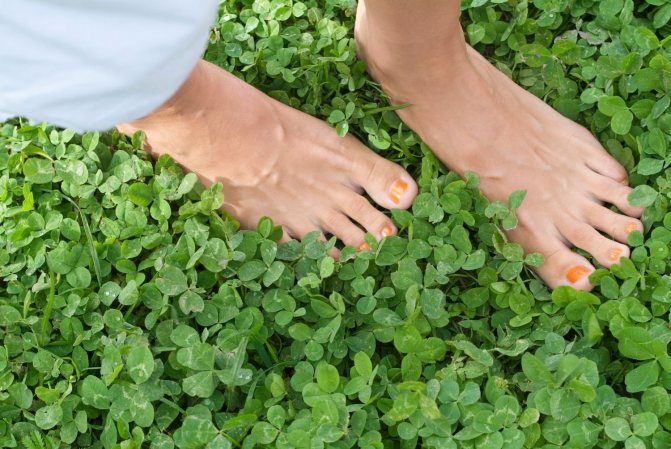

Shearing is carried out from the second year after planting, when the plants reach 10 cm. Do not worry if the stems begin to stick out after mowing.In just a few days, young leaves will appear and the lawn will take on a beautiful appearance. The mowing frequency is determined depending on the purpose of the coating.
If it is exclusively a functional task, then the haircut is carried out 2 times a month. This is because flowers can attract bees, which can sting humans. If the functions of the lawn are exclusively decorative, then the mowing is carried out depending on the degree of drying of the inflorescences. As soon as they turn brown, cut the hair straight away.
The tidiest surface looks when mowing with a lawn mower. It looks very nice when the height of the lawn is 6–8 cm. If mowing is not done in time, then dense stems can provoke jamming of the knives. Then you have to trim the excess length by hand.
The pros and cons of clover as a siderat
Clover is a plant from the legume family. In green manure, its ability to fix nitrogen in the upper arable layer is appreciated. Growing, mowing and embedding clover in the soil is an alternative to the introduction of organic matter: humus, compost, manure. Clover is often included in crop rotation, its crops are alternated with crops that love fertile soil: potatoes, cabbage and pumpkin seeds.
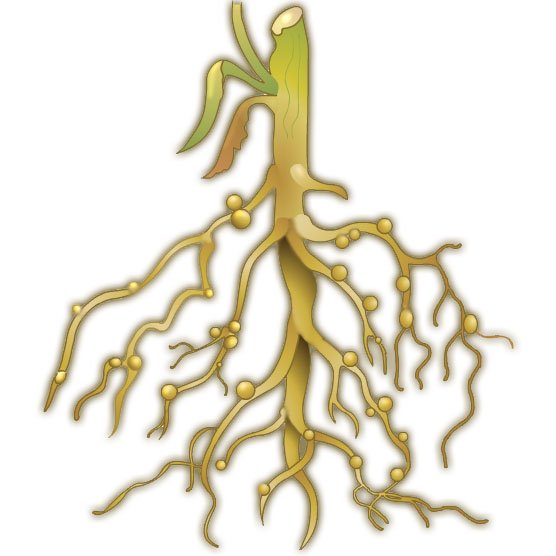

Bacteria living in nodules help legumes accumulate nitrogen.
In addition, clover absorbs phosphorus compounds that are difficult to reach for other plants from the soil, and contains a lot of potassium. As a result of its plowing or use as mulch, useful macronutrients enter the ground in an easily digestible form and serve as food for cultivated plantations.
Another positive effect is the ability to structure the soil. The fibrous roots of clover grow in breadth, penetrating the topsoil like capillaries. Through the formed channels, air and moisture can easily penetrate into the ground. This, in turn, improves the living conditions of earthworms and beneficial bacteria that compete with disease-causing ones. Cultivated plants are less sick, their productivity increases.
Moreover, clover retains nutrients well at the surface and prevents them from being washed out into the deep layers of the soil. This is one of the few siderates that grows well in the shade, for example, in the aisles of the garden.
Cons of clover:
- Ineffective in annual culture. Red clover can be mown as early as 2-3 weeks after germination. However, a noticeable effect on the structuring and healing of the soil occurs at least after 4 months of cultivation, the maximum - in the second year.
- Requires regular irrigation. In arid regions, without irrigation, it takes moisture from trees, shrubs, flowers, vegetables growing nearby.
- Needs soil fertility, top dressing will be required.
- It can overgrow with weeds in the first 2 years, and in the following, growing, it turns into a weed itself.
- It is always damp in the thickets of clover, which attracts slugs and snails.
Which is Better: Lawn Grass or Clover
There are many parameters that need to be examined to determine which is best: lawn grass or clover. It all depends on the time you can spend on the care of the decorative coating.m. If you live in a country house and can take care of the plants in a timely manner, then feel free to grow lawn grass. It is characterized by a brighter shade, which significantly increases the decorative effect of the site.
Clover is ideal for those who don't have time to care for their lawn. For this reason, it is often planted by summer residents who come to the site only a few times a month. Also, the clover coating does not cause allergies and is considered environmentally friendly (since it does not need fertilization). Therefore it is ideal for small children and allergy sufferers.
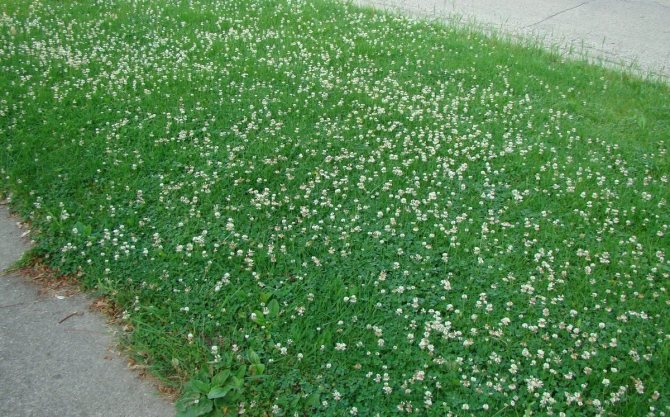

Growing a clover lawn is a fairly simple procedure if you know the basic rules for planting and caring for.You have the right to independently choose the type of plant that fits perfectly into the style of the site. The advantage of this coating is that it does not require frequent watering and fertilization. Therefore, it is an ideal option for beginners in the field of landscape design.
Diseases and pests
Clover planting looks very dense, and it is because of this that the soil under it does not have time to dry out, which contributes to the formation of high humidity. This leads to the emergence of snails and slugs, and is also the reason why clover is susceptible to fungal diseases. For prevention, a regular haircut is carried out.
In addition to snails and slugs, other insects can harm the plant:
- Alfalfa bug. To overcome this parasite, insecticides are used during the onset of budding. This is important, since at this time the insect lays the larvae, which will also be destroyed.
- Clover weevil. To prevent its appearance, clover seeds are also treated with insecticides.
- Locust. Such pests cause great harm to plants of various crops, especially the Siberian and dark-winged locusts and filly. The method of struggle is the same preventive treatment with insecticides.
From dangerous diseases, clover can be affected by powdery mildew, to prevent which it is necessary to thoroughly clean, sort and store the seeds correctly, and carry out pickling before sowing. Do not forget about feeding in the form of phosphorus and potassium fertilizers.
Seeds
Before planting white clover for the lawn (reviews confirm this), you need to buy quality seeds. It is advisable to purchase them in specialized stores. Such a clover should be mowed in rare cases, since the variety is creeping and undersized. If the coating has pink and red flowers, then the plant will be tall.
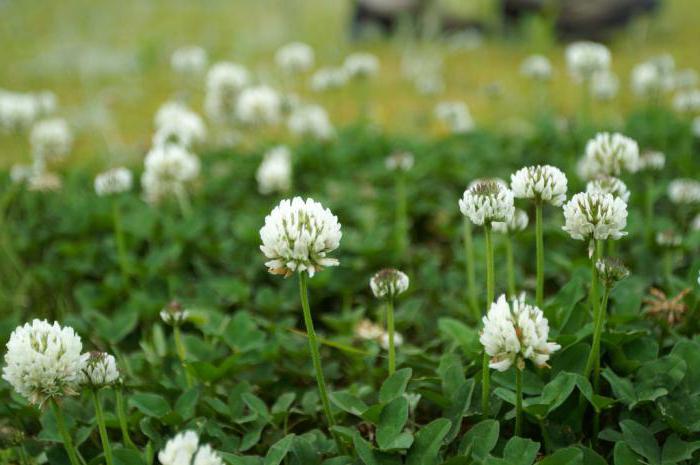

Perfect for sowing:
- White creeping - "duhmyana", "volat", "sorceress".
- Pink hybrid - "Tours", "daubyai", "handsome".
- Red meadow - "vichai", "paradise", "maro".
Plant care
This perennial plant does not need special care. Moreover, it will tolerate drought well, in the event of a prolonged absence of rain and additional irrigation. Clover is resistant to trampling. If children often frolic on your site, then this is an ideal plant that will continue to grow calmly even after it is a little bit crumpled.
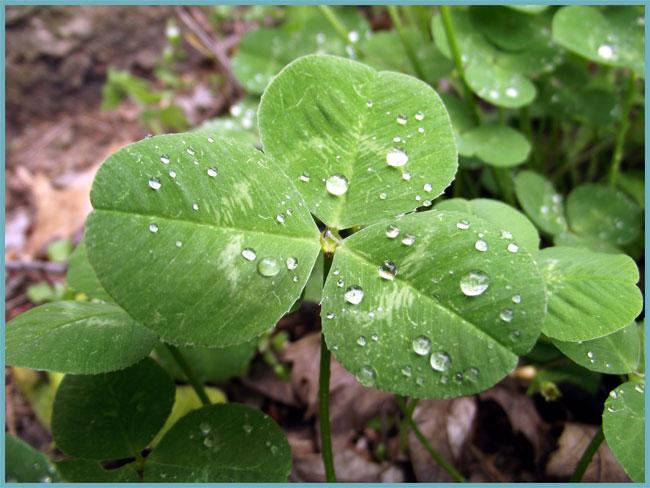

Clover need not be watered - rainwater will be enough for it
Clover must be cut regularly if you do not want it to fill all the beds around, because it is not for nothing that clover is classified as a weed. To stimulate re-flowering, it is necessary to remove withered and dried flowers. Do not allow waterlogging, this can provoke culture diseases and insect attacks, such as slugs.
Common varieties
Ronnie. This variety is actively used in landscape design. His homeland is distant Scandinavia. Ronnie is resistant to diseases, harmful insects, temperature extremes. With proper care, plants of this variety turn into a gorgeous carpet!
Volat. The peculiarity of this variety is that it grows rapidly. Creeping clover Volat is distinguished by large stems and leaf blades. Just like the previous variety, it is resistant to diseases and pests. Volat decorates pastures and gardens with a stunning thick carpet. It is recommended to plant it in a fertile, moist soil. The homeland of this variety is Belarus.
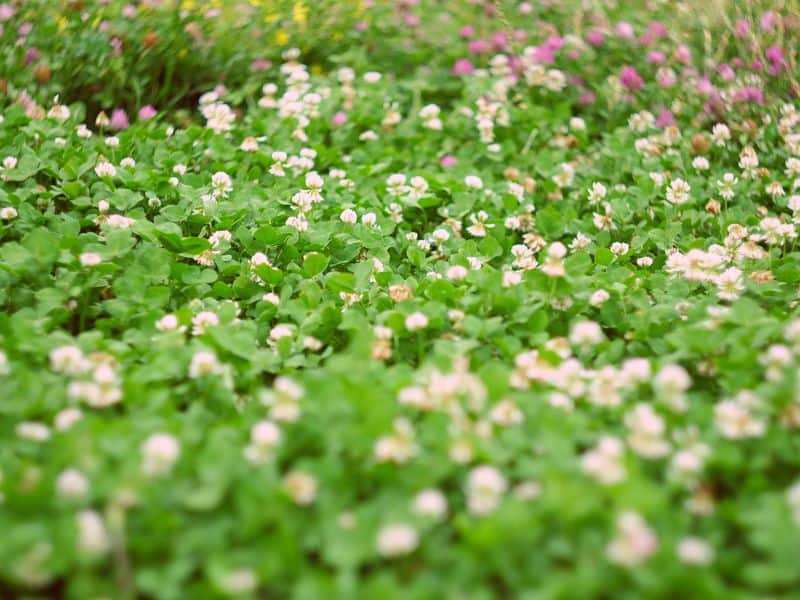

Dukhmyany. The plant was also bred to the Republic of Belarus. By itself, it is high, often used as feed for cattle. Clover Duhmyany makes certain requirements for the soil: it must be moderately moist.
Wizard. The culture of this variety is not tall, but medium-sized. It is rarely used in landscape design, but quite often it is used to feed animals.White Clover Wizard has cleansing properties, its advantages include high nutritional value and resistance to diseases, including clover cancer. The variety also has good wear resistance. It can be said to be durable.
Nanook. The clover of this variety is small: it grows only 13 cm. With proper care, it acquires a very rich green color. Nanook, like other clovers, quickly spreads throughout the garden. The plant is perfect for a compact garden.
Briefly about the benefits
As I said, creeping white clover is used in folk medicine. It is rich in composition and contains:
- essential oils;
- acids indispensable for our body;
- vitamin B;
- ascorbic acid;
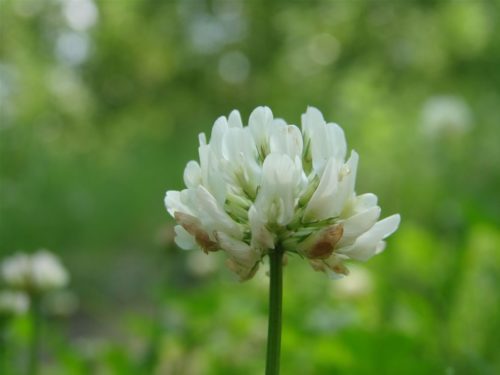

However, before using clover to prepare a decoction, you should make sure that there are no allergies. I also note that infusions are prepared from this plant, which are often used for compresses. White clover creeping complexly heals the body. The flower has an analgesic, antimicrobial effect, it promotes the outflow of bile.

